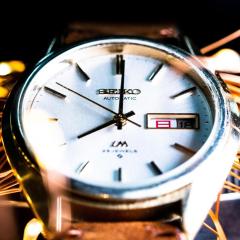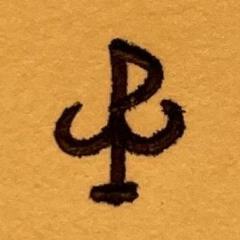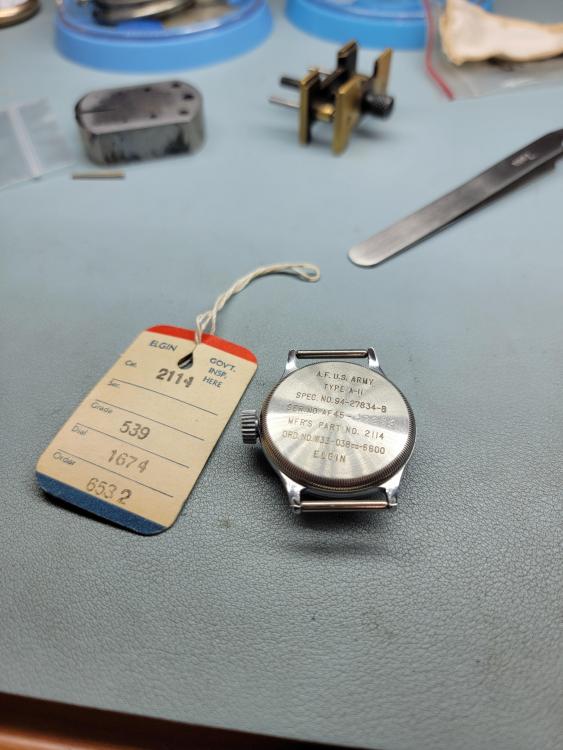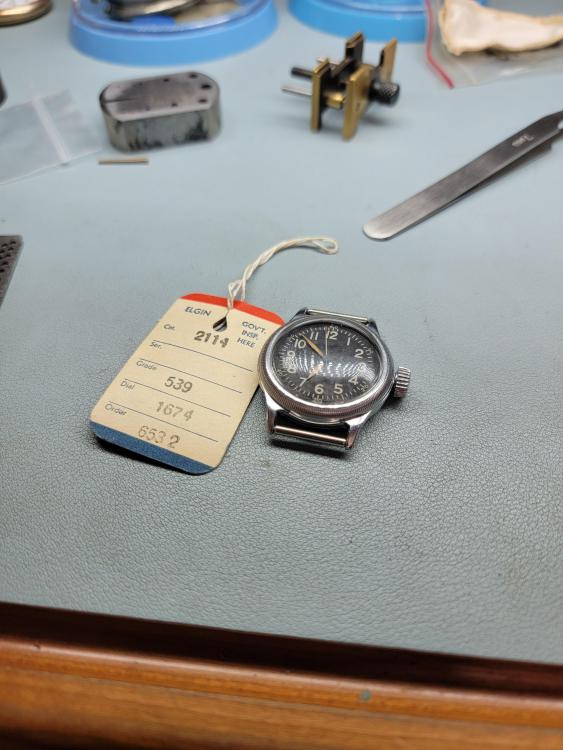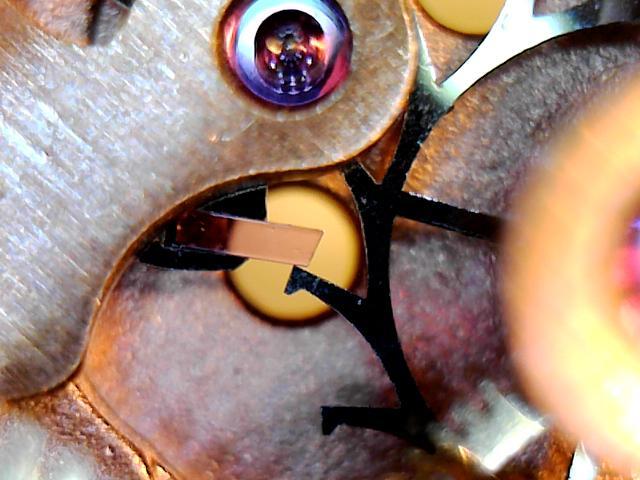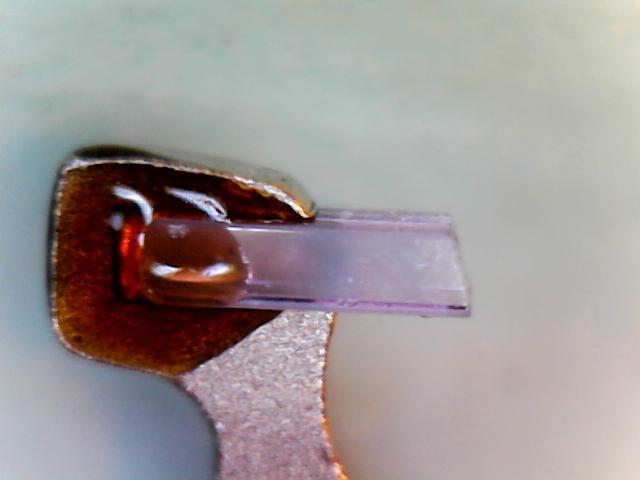Leaderboard
Popular Content
Showing content with the highest reputation on 12/22/22 in all areas
-
Hi everyone, I’m not exactly new member, but since after my short appearance here 2 years ago I’ve been silent to community I think a bit of update is good comeback. Yes about 3 years ago I’ve started watchmaking hobby due to lack of good quality puzzle. Few Amazon purchased tools and flea market soviet watch got me started all right. Number and quality of tools, new and ambitious projects eventually brought me up here. I have to say community here always helped me with my questions and I always remembered this forum as great knowledge resource. Eventually sign up for Distant course in BHI and decided to pursue watchmaking as my profession. Age 32 not easiest decision to make specially for my GF. Since all future plans and me wanting to move from Estonia to Slovakia because lack of watch interest and opportunity there. After longer talks we all were confident, this is way to go for both of us. For my surprise, took me 2 weeks to find a job in local watchmaker shop as apprentice. Basically they gave me poor salary and table under staircase (pure Harry Potter style). Long story short, I worked harder and longer then others and soon became shift leader, then mechanic watch repairer to junior manager of two workshops with team of 5 watchmakers. Meanwhile working on setting up my own shop, that consumes all of my money (honestly, learned to live of 2 digit numbers on bank account) I’m coming back here since all this time wanted to join community that I liked, helped me and inspired me to all this adventure. Cheers guys, glad you’re still rocking here! Jakub3 points
-
By the way you still haven't answered one of my questions I wasn't talking about the train for lubrication. The waveform going straight across looks a bit rough if somebody forgot the oil there escapement that specifically the pallet stones you will get an effect just like this. Even if you oil the escapement and like one stone is dry you can see it in the timing graph so if you don't oil the escapement you will see it will look war and you will not have amplitude. But yes when you switch the crown position your definitely losing power I would still oil the gear train oil with anything a half I don't care what you will with oil with Just about anything I don't really care but there should be oil on the train and definitely oil on the escapement that's the pallet fork and escape wheel2 points
-
2 points
-
I wouldn't assume the fork is the wrong one. OP's movement seems to be older than the one in the walkthough; his movement has banking pins, where the other has the bankings stamped in the plate. The fork cock has a nice grained finish too, not really high end, but nicer than the other. If it was intended for a high grade brand, Nivarox could supply different levels of quality on the escapement. I've seen beveled forks in some older ETA, also in some AS (spectacular, Patek level). With a microscope you can usually get an angle where you can pretty much see what's going on. If it's the correct fork there's no way the jewel is hitting the bottom of the slot (notch), unless of course the balance/ roller isn't original. Fredrik- to me if you can see that the roller jewel isn't making contact with the fork horns (?), you can see if it's hitting the bottom of the notch. In running, the roller jewel never makes contact with the horns- those are a safety feature to prevent unlocking at the wrong time. The roller jewel makes contact with the sides of the notch, to unlock and then receive impulse from the escapement. The freedom of the jewel in the slot is around 0.01mm, so very small. On that note, depending on how the watch was treated in the past, there can be a buildup of "stuff" for lack of a better term on the sides of the fork notch. I've seen dramatic improvement in performance in watches that seemed pretty perfect except for crap amplitude by examining the notch under microscope and scrubbing the sides of the notch with pegwood. Similarly you can find stubborn deposits on the sides of the roller jewel. My gut says your issue lies around there.2 points
-
Which video is it - I'd like to see why he is doing it? Does he just rotate them in the jewel holes? That is what the part is doing anyway. The idea of pegging, is to use a soft and slightly absorbent material (i.e. wood) to clean out the jewel holes. When pressed lightly, the wood moulds itself to the hole shape, and cleans any stuck on grime. The metal tools won't do that.2 points
-
Thanks, it was fun making the tools but I have been pegging using the peg wood1 point
-
Hi As its a front loader it more than likely has a split stem, there are two schools of thought on their removal. Some advocate a straight parallel pull using a presto type tool for the purpose and others by removing the bezel and crystal turning the watch face down and turning the stem untill the joint is vertical allowing the movement to drop out ( if the joint is slack enough). Most I think use the straight pull to release the stem but always be aware that it could break the female end of the stem on removal requiring a new stem if available. Others will also have their pet ways of doing it, so likely more posts will be offering you advise. cheers1 point
-
I'd swish them around in warm water with dish soap (Fairy Liquid if in Europe, Dawn in the U.S.), rinse well in clean water, quick dip in iso alcohol, pat dry and then dry with warm air. This is what the old electronics guys I know would do for circuit boards. Normally I wouldn't worry about the time in the alcohol, but Bulova was treading in new territory with the size of wire on these coils so I don't know what kind of lacquer they used on the wire and to coat the coils after winding.1 point
-
At one time now banned of course Freon would've been really good. Used in the electronic industry and I don't think it would hurt anything it would definitely evaporate relatively quickly. Lighter fluid is probably harmless But I would not leave it in there very long just a quick dip to get the job done and hopefully will be okay. Then definitely do not wear use anything with ultrasonic bizarre stuff you do not want to do oriole damage something. Then getting replacement components for something like this is challenging to use one be careful not to damage anything.1 point
-
I agree, this looks suspicious. In @VWatchie's walk-through the pallet fork isn't chamfered either. Coincidentally I just realized I have another watch with a 2472 in it. I'll check the pallet fork in that and try swapping. Will have a closer look at the guard pin tonight. Thanks for the link, that's a very illuminating read! Sounds like "notch" is the correct term for the space between the horns.1 point
-
Something is definitely catching. I agree with your conclusion, that there is unwanted contact between the balance and pallet fork, when the impulse jewel is between the horns. Look more closely at the guard pin. Is it fouling the safety roller? I think you will find this interesting: https://web.archive.org/web/20080622201835/http://www.timezone.com/library/horologium/horologium631673198118416858 Usually not. Why in this case?1 point
-
I have lost the luxury of watching videos ( disconnected vpn ). You own tests and analysis are sound, you are very close to the location of the fault. You show the balance & cock assembly and the frok in last two images, so you can check if horns of the fork are spaced wide enough for impulse jewel or if the horns need a polish. Long gurad pin might cause the issue you are encountering. Just my two cents. Good luck Oh , oil the impulse jewel.1 point
-
1 point
-
1 point
-
Well, I haven't been blessed with one of those Currently working on a voluntarily appointed Miyota pallet-fork, as a trainer for the Omega 861 fork, I have to say that it is fiddly work. Currently both Miyota pallet jewels are removed and are, together with the fork, ready for further cleaning. My biggest fear is that one of the jewels (or both) leaves the battle field. Even though very inconvenient, that wouldn't be the end of the world, however one of the 861 jewels leaving would be, at least for me In case of the Omega 861, where the entry-jewel is deemed to sit slightly too deep, instead of stripping the whole fork wouldn't it be wiser to just warm the fork, melt the old-shellac and try to push the jewel in a bit further? Wouldn't that greatly reduce the risk of the jewel taking a hike? Are there any con's in doing so? Picture of the current (as it left the factory in 1975) shellac of the Omega 861;1 point




